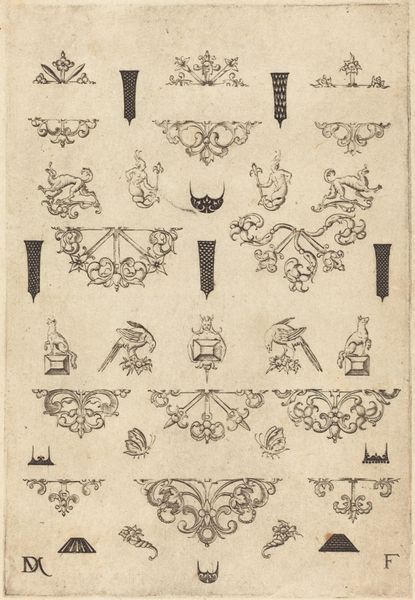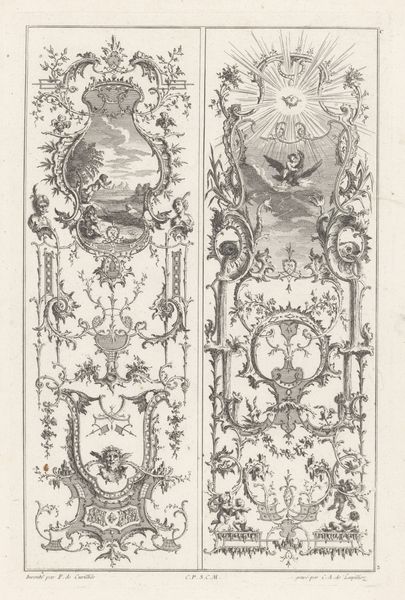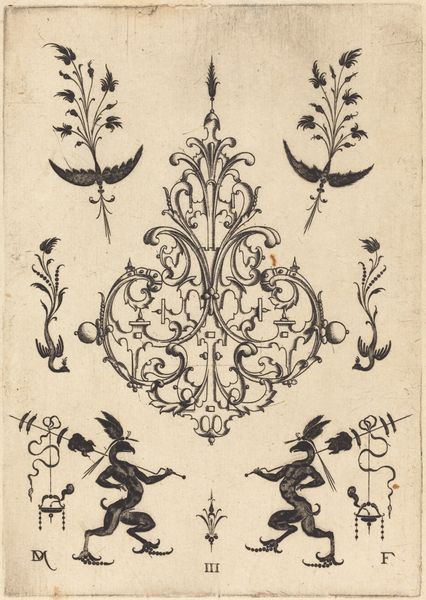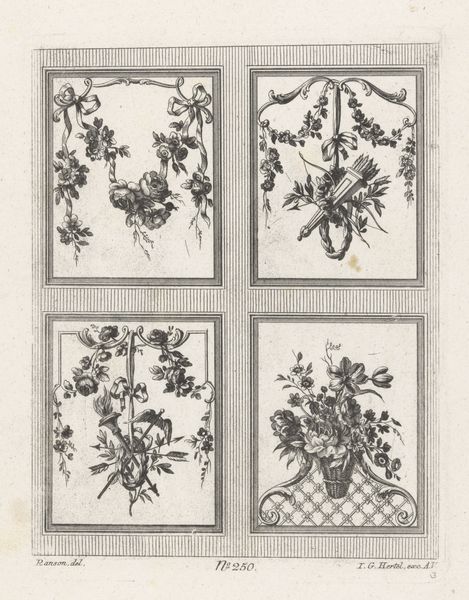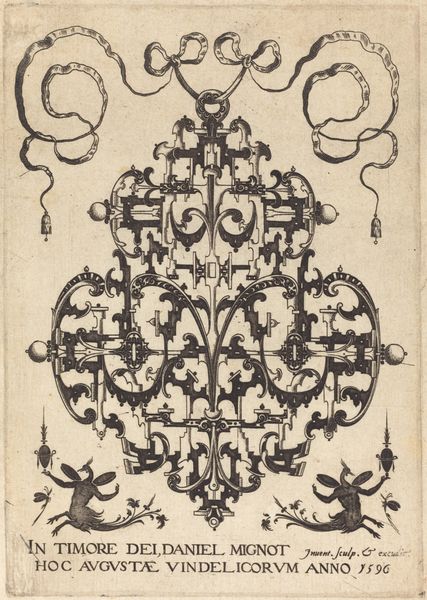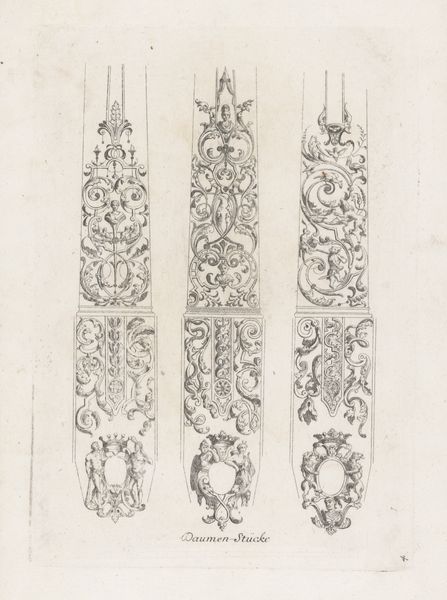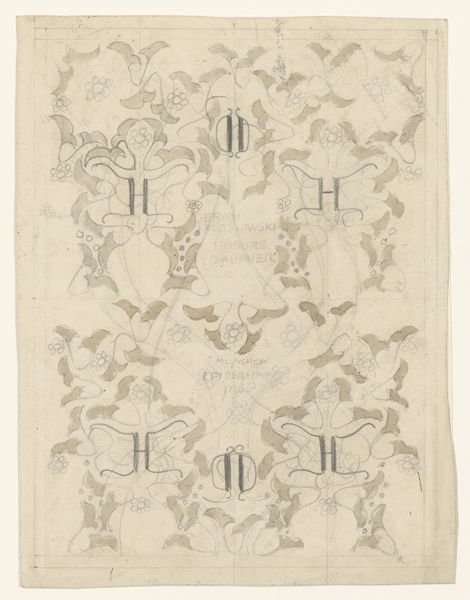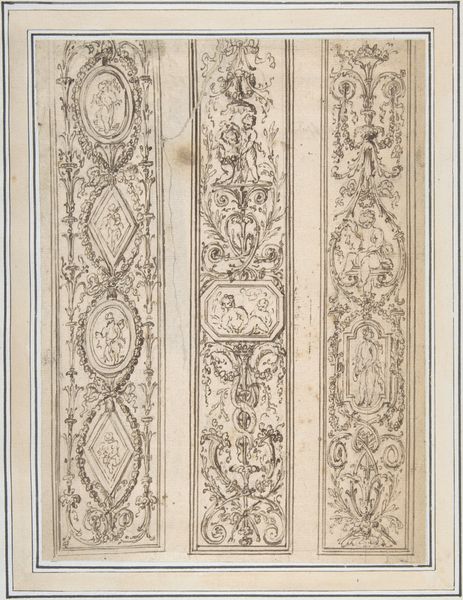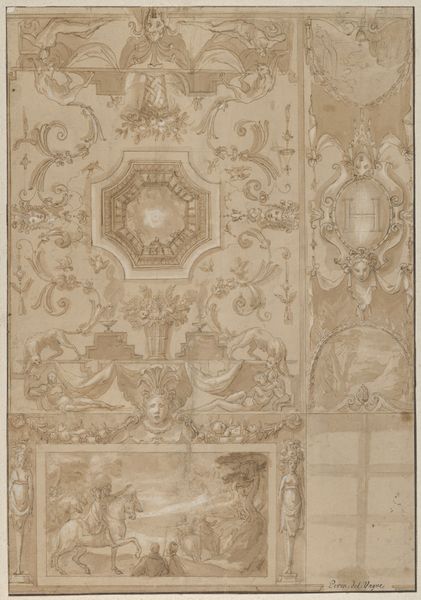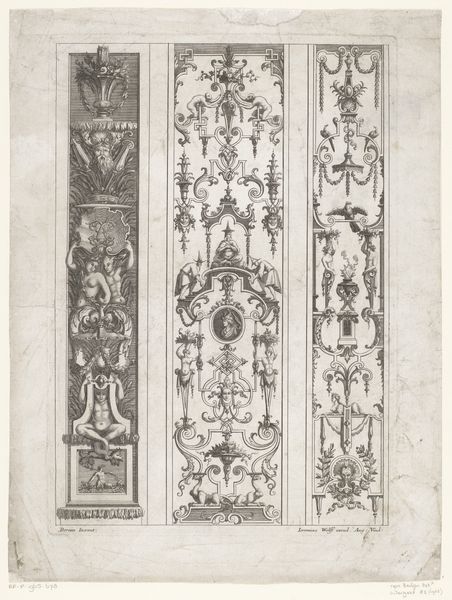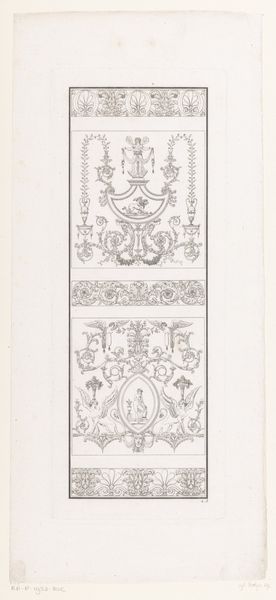
Design for Seven Vertical Panels of Arabesque Decoration, Farnsborough, England 1880 - 1886
0:00
0:00
Dimensions: 11 3/16 x 16 15/16 in. (28.4 x 43 cm)
Copyright: Public Domain
Jules-Edmond-Charles Lachaise designed these seven vertical panels of arabesque decoration, likely in England, using graphite. The arabesque tradition, with its flowing lines and intricate patterns, carries a complex history. Originally developed in Islamic art to avoid depicting human figures in religious contexts, it later became a popular decorative motif in Europe, particularly during the Renaissance and Baroque periods. Lachaise's designs reflect this historical journey, blending the abstract beauty of the arabesque with European ornamental styles. Note how each panel features a unique arrangement of floral motifs, classical figures, and heraldic symbols. Consider how these designs might have functioned within a specific social context. Were they intended for a private residence, perhaps conveying status and refinement, or for a public building, aiming to inspire civic pride? The inclusion of heraldic symbols, like the rampant horse, suggests a connection to aristocratic identity and power. The drawings demonstrate the capacity to adapt and transform meaning across different cultures and historical periods.
Comments
No comments
Be the first to comment and join the conversation on the ultimate creative platform.
